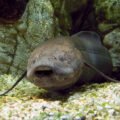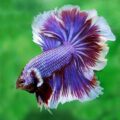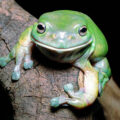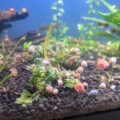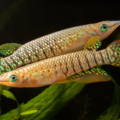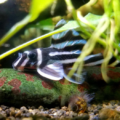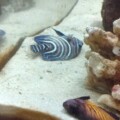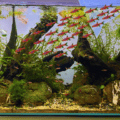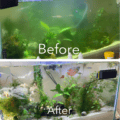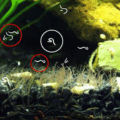Easy-to-follow care tips for first-time pet keepers interested in a low-maintenance and common frog like the American green tree frog species. Included in this guide are tank setup, identification, feeding, care requirements, and much more!
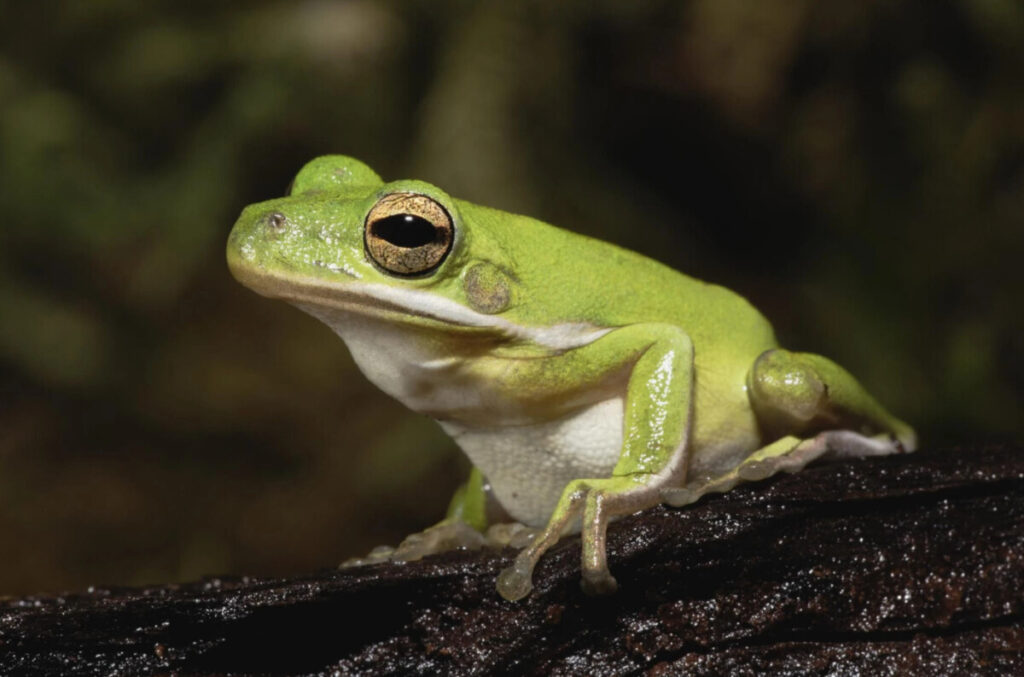
American Green Tree Frog: Bright, Agile, and Vocal
American green tree frogs are small but active arboreal pets native to the Southeastern U.S.A. region. This small pet frog is famous for its nighttime calls, unique physical traits, and insectivorous appetite.
As a low-maintenance animal, this species is a beginner tree frog. So, if this is your first time attempting Hyla cinerea care, don’t worry.
You’ll see how to care for this tiny yet agile arboreal pet in this American green tree frog overview. It covers lifespan maximization recommendations, health care tips, identification, housing, and dietary guidelines.
Author’s Note: Checkout our post on The 7 Beginner-Friendly Amphibians for a complete guide to choosing the right amphibious pet for first time keepers.
Let’s dive in with a summary of its background.
Habitat & Wild Behavior

Hyla cinerea’s environment is naturally in the Southeastern part of the U.S.A., particularly in swamps, marshes, and backyard ponds.
Although this southeastern tree frog is arboreal and thrives in humidity, it also becomes aquatic during breeding seasons.
This species exhibits a unique wild tree frog behavior of jumping into trees to hide when handled.
So, before recreating an ideal American green tree frog habitat, here’s a peek into what it looks like.
Physical Traits & Size
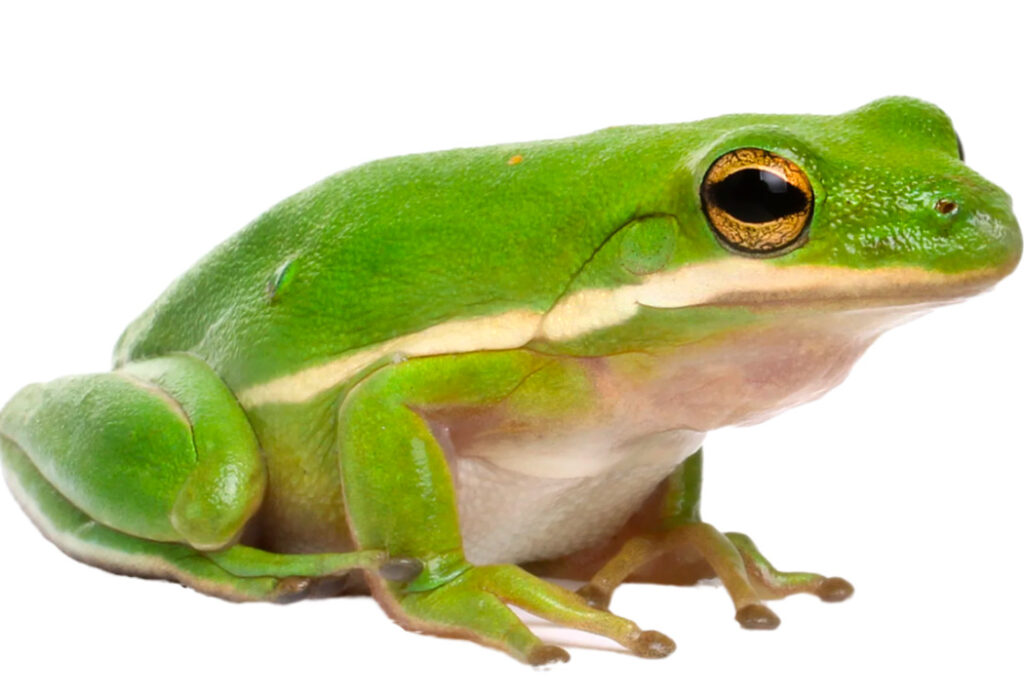
Physical traits and unique behaviors are the two key metrics for identifying the American green tree frog species from other pets. Because while you may recognize their appearance, characteristics help you distinguish similar-looking frogs from each other, like the Australian Green Tree Frog.
Physical Traits
A typical Hyla cinerea’s size is moderate, with a length of 1.25–2.5”, a slim body, slender limbs, and smooth skin.

You’ll also notice specific tree frog markings like spotted golden flecks on their smooth skin and bright green or rare reddish-brown dorsum/upper body. These underbellies are typically creamy or white.
You can also use this species’ overall size to distinguish the males, which are smaller than the larger females.
Unique Characteristics
The most unique characteristic of this nocturnal creature is its mating call during the breeding season. When the males start calling, their jaws expand to form a large bubble.
This chorus makes the American green tree frog a lively display. Now, let’s design an ideal arboreal-friendly enclosure.
Enclosure Setup & Planting

Knowing your pet’s size and habitat background, you can now design an ideal American green tree frog tank setup.
Start by getting a 10–20 gallon tall tank. The vertical terrarium for frogs sets a lovely backdrop for its arboreal tendencies.
You can add live plants and climbing branches to your arboreal frog enclosure without worrying about them extending outside the tank.
Some frog-safe plant species you can explore include ferns, philodendron, pickerelweed, and water lilies.
Once you set up the terrarium, cover it with a secure, breathable lid to prevent escape.
Temperature, Humidity & Lighting

Found On Amazon
One thing about amphibian climate care is that they need humidity to thrive alongside warm temperatures and low-UVB rays.
Temperature
An ideal American green tree frog temperature should be between 75–80°F in the morning and 65 – 68°F at night.
Humidity
An ideal Hyla cinerea humidity should be between 60–80% and mist the terrarium twice daily. Ensure the substrate on the terrarium’s floor can hold humidity, such as coconut husk shavings and shredded bark.
UVB Lighting (Optional)

Regular room temperature light is enough for your pets, but for extra benefits, you can add heating lamps and low UVB lighting.
This lighting is optional because of the American green tree frog’s nocturnal nature, but these UVB benefits for amphibians should encourage you to add it to your terrarium.
- Adding the UVB lighting to a basking area provides vitamin D3
- Calcium absorbs better with UVB lighting
Ensure the lighting is movable or placed in a spot where your pet can move from after basking.
Diet & Feeding
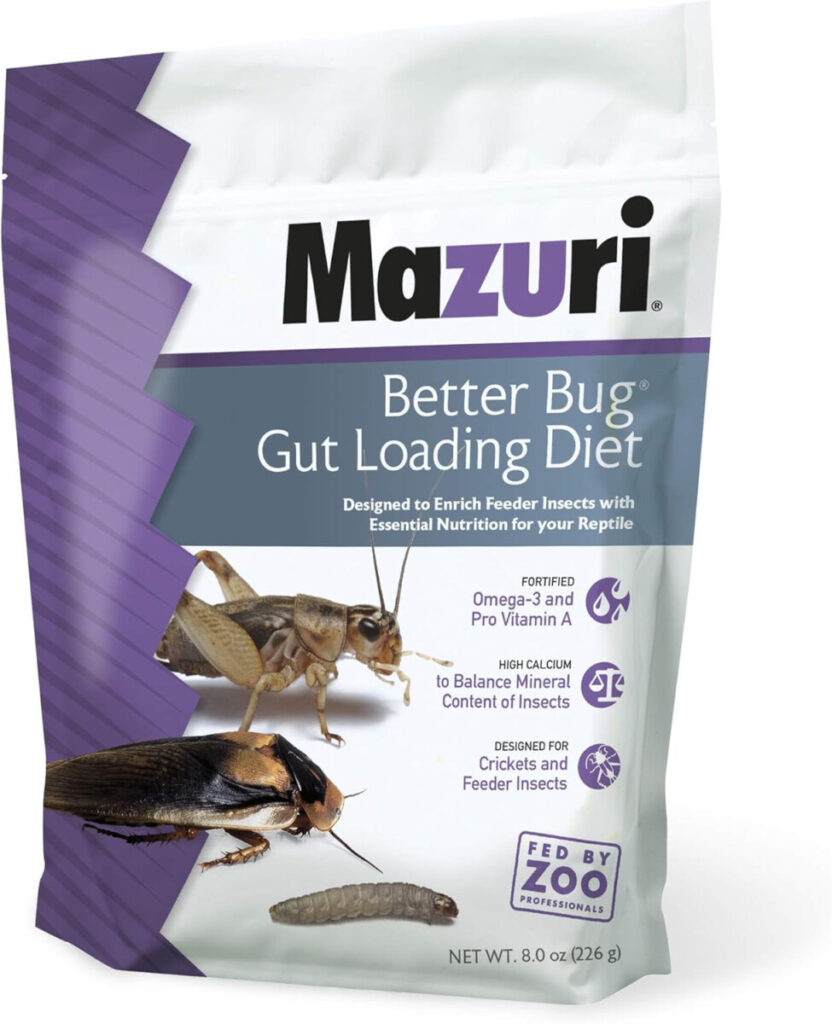
Found On Amazon
Like every other thing about this pet, the American green tree frog’s diet is different from what you expect. This species is an insectivore, meaning it feeds on a small insect diet.
They primarily eat flies, mosquitoes, small crickets, ants, fruit flies, pinhead roaches, and a variety of small insects. Because of their natural habitat, American green tree frogs sometimes eat plants and plant materials, but it’s not their primary source.
After sorting out what to feed Hyla cinerea, figuring out the right frequency is your next step. An ideal feeding frequency is 3 – 4 times weekly for small frogs.

Hyla cinerea’s temperament is generally calm and social with its kind, but it can get tense when it feels endangered. So, let’s see how to manage an American green tree frog’s behavior outside its natural habitat.
You can enjoy a stress-free frog interaction if you build a species-specific environment.
Handling
For some species, handling pet frogs is normal, but it can be dangerous with American tree frogs because they get agitated and begin to make loud noises until you leave them.
Health Concerns & Prevention

Providing a safe and arboreal-friendly terrarium with enough insects to eat is suitable for your American green tree frog’s health. They’re not prone to common frog diseases like fungus infections, skin shedding issues, and parasites, but you must still be careful.
Prevention Tips
Follow the Hyla cinerea care tips already listed in this guide, such as providing adequate nutrition to boost their immunity, building a suitable terrarium with stable humidity for comfort, and keeping like-kind frogs as tank companions.
Conduct consistent amphibian wellness checks to ensure all parameters are stable and your pet is in top living condition.
If you notice any signs of sickness, immediately quarantine the frog and administer appropriate treatment, such as antibiotics for infections, a better diet, and improved environmental conditions to kill parasites.
Lifespan & Care Level
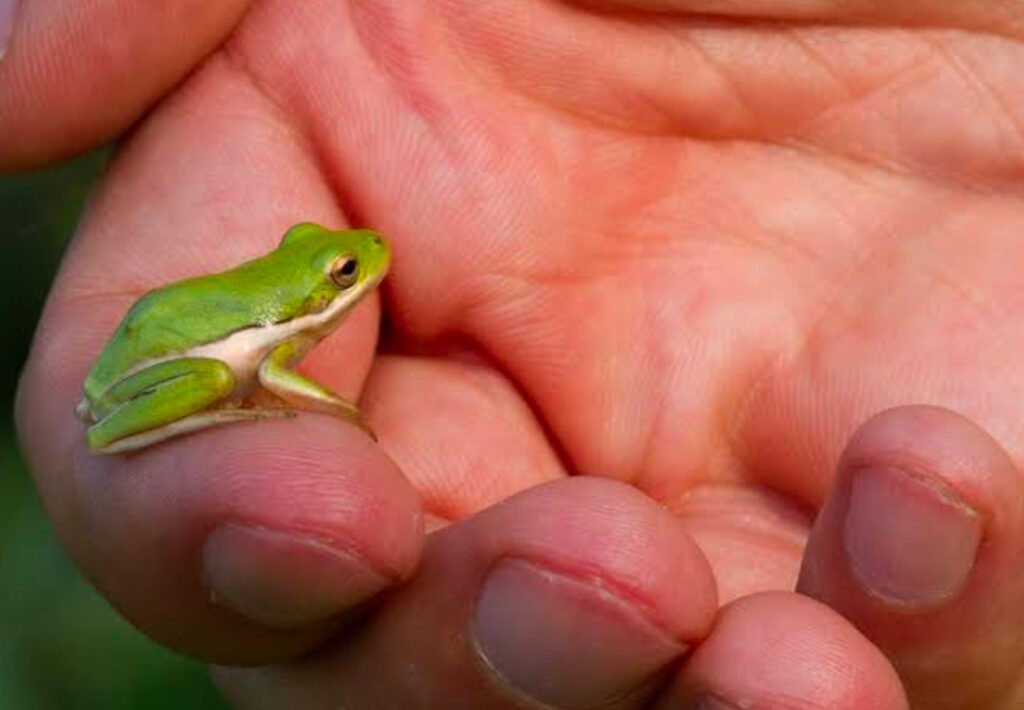
The American green tree frog is a beginner pet frog choice because it requires minimal care, but that doesn’t mean you can slack off. An average American green tree frog’s lifespan can extend between 4 and 6 years.
So, if you’re ready to provide moderate maintenance for this species, here are some long-term frog care practices to help:
- Set up an ideal terrarium since they’ll spend all their life in there
- Make the terrarium safe with substrates that can maintain humidity levels
- Feed your pet enough insects as staple foods
- Add worms as treats to increase your frog’s protein levels
- Clean the terrarium consistently by removing bio waste and replacing bowls daily
- Avoid handling to reduce the risk of stress.
- Include a visit to a species-specific veterinarian at least once a year for a comprehensive checkup.
You’re ready to keep this small amphibian pet. So, let’s wrap up this overview.
Conclusion: Is the American Green Tree Frog for You?
After reading this Hyla cinerea pet advice, it’s time to decide if this species is the one for you or not. If this is your first time attempting small amphibian pet care, then this summary will guide your approach and decision.
For a colorful, active, and fun-to-watch pet, keeping an American green tree frog is a great choice. Building its terrarium, maintaining its parameters, and providing a nutritious diet are budget-friendly and necessary care practices.
Note, however, that the American green tree frog is an interactive terrarium species best for observation, and not handling. So, you must be okay with a primarily display only pet.
Don’t forget to tell us your experience in the comment section below.

